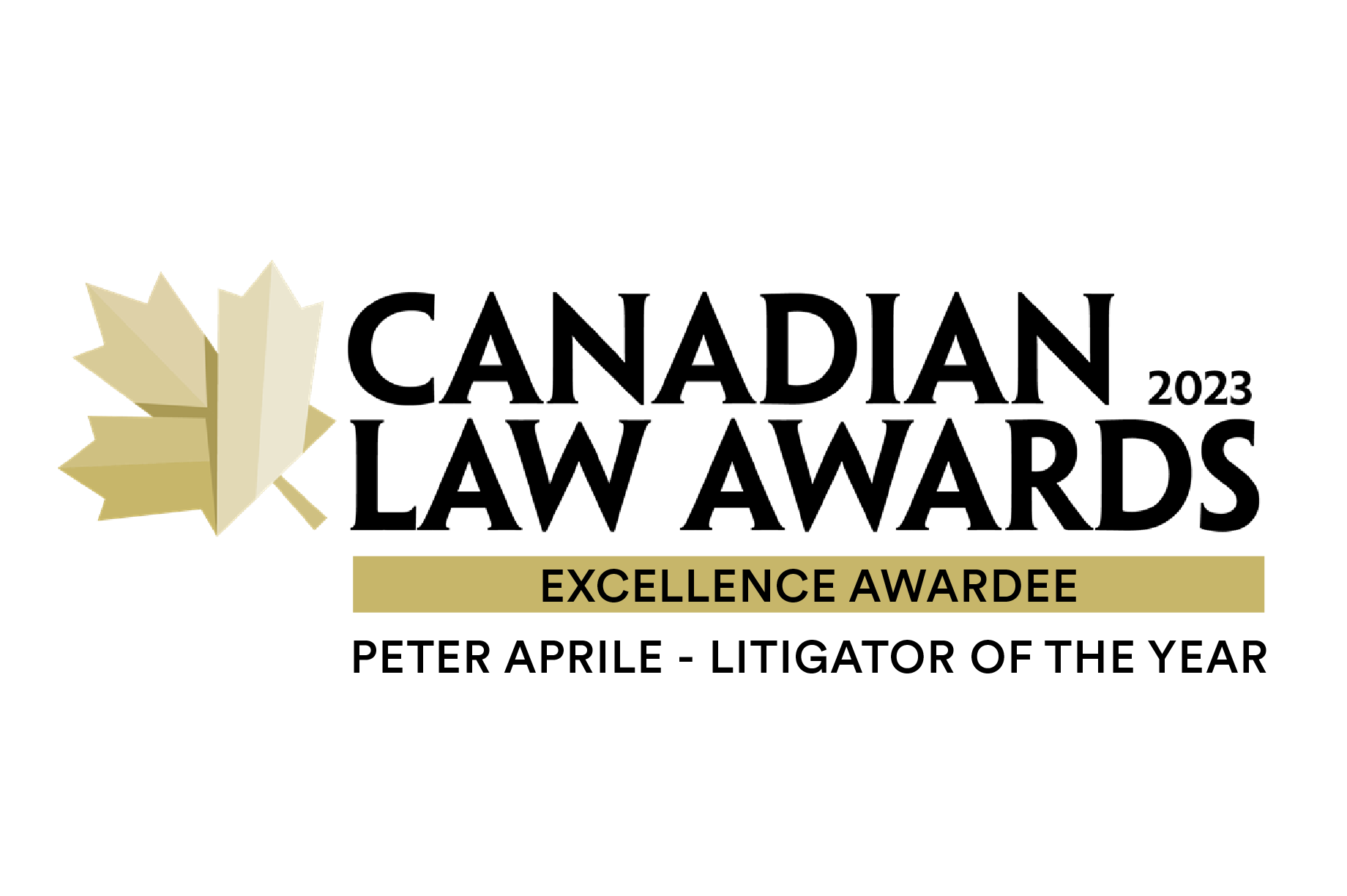
Executive Summary
Tax litigation sits at the intersection of mandates distributed across the Canada Revenue Agency, the Department of Justice, the Tax Court of Canada (the Court), and the Department of Finance. Each institution performs well within its own role, yet the system has no framework to align litigation conduct across these mandates. The absence of such a framework is architectural rather than operational. It produces predictable variation in tone, proportionality, position vetting, disclosure discipline, settlement practice, admissions practice, and issue narrowing. Recent Tax Court decisions have surfaced these patterns by observing variability in discovery interactions, settlement practice, admissions, and issue narrowing across files.
Each institution carries out its role effectively, but no one is responsible for aligning its conduct. As a result, the pathway reflects local practice rather than shared expectations. The result is a pathway shaped more by individual or local practice than by shared principle.
Canada has already demonstrated that cross-institution alignment is possible within existing authority. The Indigenous Litigation Directive translated broad principles into operational duties for government litigators, creating coherence across distributed mandates while preserving independence. Its relevance to tax litigation is structural. It shows how a conduct framework can create consistent, principled behaviour without altering institutional roles.
A tax-litigation conduct directive would fill the governance gap. It would provide a shared interpretive framework for CRA and DoJ, support more consistent use of defensibility and narrowing, strengthen public-law credibility, and improve pathway predictability. It would also support the government’s cost-efficiency objectives by reducing unnecessary escalation and aligning decisions that already intersect in practice. All of this can be achieved within the current authority.
Foreword: Why This Framework Matters
Tax litigation differs from disputes between private parties. It operates within a public law environment shaped by institutional mandates, procedural obligations, and structural asymmetry. The Crown does not simply resist or pursue claims. It exercises a public function within a legal architecture designed to balance independence, transparency, efficiency, and credibility. Yet this architecture does not include a framework that aligns litigation conduct across the institutions that participate in it.
CRA approaches disputes through an administrative compliance lens. DoJ views them through a litigation-risk and precedent lens. The Tax Court applies an adjudicative lens shaped by the record before it. Finance views the system through a policy and legislative lens. None of these vantage points includes responsibility for coordinating conduct across mandates. As a result, litigation posture often reflects institutional vantage points and local practice rather than shared principles.
Tax Court decisions have surfaced this pattern by noting variability in discovery interactions, settlement practice, admissions, and issue narrowing. These observations do not question institutional performance. They highlight the structural reality of a system in which conduct expectations emerge organically rather than through coordinated design and realignment.
A litigation directive offers a way to address this gap. It does not alter the Crown’s authority or constrain counsel’s judgement. It provides a shared interpretive lens for decisions made along the litigation pathway. It strengthens clarity, defensibility, and consistency within the existing architecture while preserving institutional independence.
1. Introduction: Why Conduct Architecture Matters
Tax litigation unfolds along a path shaped by the interactions among the CRA, the DoJ, and the Court. Decisions about rationale, disclosure, escalation, narrowing, settlement, and position vetting accumulate along this pathway. Because these decisions are distributed across institutions with distinct mandates, the system lacks a mechanism to calibrate litigation conduct across them.
A conduct framework matters because it provides a shared operational vocabulary for CRA and DoJ. It links decisions that already intersect in practice and supports a more consistent approach to narrowing, disclosure, and defensibility. It improves predictability for taxpayers and clarity for the Court, while preserving institutional independence and counsel's professional judgement.
Tax litigation also operates within a public law architecture designed to balance independence, transparency, efficiency, and credibility. Yet the architecture does not include a coordinating layer for conduct. The absence is structural rather than intentional. It reflects a system in which authority is distributed and where expectations about conduct emerge locally rather than through shared design.
A conduct directive introduces that design layer. It clarifies how positions are vetted, how issues are narrowed, how rationale is delivered, and how escalation is approached. It does not prescribe outcomes or limit discretion. It provides the interpretive structure needed to translate existing principles into consistent, defensible litigation behaviour across mandates.
2. The Architecture of Tax Litigation Today
Tax litigation is structurally distributed. CRA administers the Act. DoJ represents the Crown in court. The Tax Court adjudicates disputes. Finance maintains policy coherence. CAS supports operations. Each institution carries out its role effectively, yet none is responsible for aligning litigation conduct across the system.
Each institution’s vantage point shapes how it interprets its responsibilities. CRA approaches disputes through an administrative and compliance lens. DoJ applies a litigation lens that emphasizes defensibility, risk, and precedent. The Court applies an adjudicative lens shaped by the record before it. Finance views the system through a policy and legislative lens. These vantage points coexist, but they do not converge through a shared structure that links conduct expectations along the pathway.
Tax Court decisions have surfaced this structural pattern by observing variability in discovery interactions, settlement practice, admissions, and issue narrowing. These observations highlight how conduct evolves differently across files when expectations arise locally rather than through coordinated design.
Existing frameworks govern adjacent domains but do not align litigation conduct. The Taxpayer Bill of Rights establishes administrative expectations. CRA integrity codes guide internal employee behaviour. DoJ litigation manuals focus on procedure and file management. MOUs and portfolio standards address workload allocation and risk. Each creates clarity where it applies, yet none provides a cross-institutional structure for calibrating conduct.
The gap lies not within these frameworks but between them. It is in the space where CRA and DoJ interact, where disclosure, narrowing, rationale discipline, and settlement signals accumulate without a shared interpretive foundation. In this space, conduct reflects local practice rather than coordinated design.
Table 1 — Existing Frameworks and Their Structural Gaps
| Framework | What It Covers | What It Does Not Address |
|---|---|---|
| Taxpayer Bill of Rights | Administrative access and service expectations | Litigation conduct, proportionality, narrowing, and rationale discipline |
| CRA Code of Integrity | Internal employee behaviour | Litigation posture, defensibility standards, and inter-institution conduct |
| DoJ Civil Litigation Manuals | Procedure and file management | Cross-institution standards for narrowing, resolution orientation, and disclosure timing |
| MOUs and TLS Portfolio Standards | Workload allocation and risk | Litigation-specific conduct and cross-file consistency |
These frameworks together regulate administration, ethics, and process, but leave litigation conduct to individual judgement.
3. Why Existing Frameworks Cannot Resolve Litigation Conduct
Existing frameworks address important adjacent domains, but none create coherence in litigation conduct across CRA and DoJ. Each framework was designed to govern its own scope rather than the shared space where institutional mandates intersect along the litigation pathway. As a result, conduct expectations emerge locally, shaped by institutional vantage points rather than by a common structure.
This gap matters because conduct becomes visible through discovery interactions, settlement practice, admissions, and the judgement about what to advance or set down as the file evolves. These decisions shape how issues are narrowed, how disclosure is delivered, how rationale is explained, and how escalation is approached. Without coordinated expectations, these choices vary across files and regions in ways the current architecture does not reconcile.
The absence of a shared conduct structure is not a function of institutional performance. It reflects a distributed system in which authority and expertise are divided across mandates, and where no institution is responsible for aligning conduct expectations. CRA applies its internal standards. DoJ applies its litigation standards. The intersection between them remains unstructured at the conduct level.
A conduct framework addresses this structural gap. It provides a shared interpretive lens for decisions made along the pathway, clarifying how positions are vetted, how narrowing progresses, how rationale is recorded, and how settlement space is evaluated. It supports clarity and predictability without limiting discretion or altering institutional roles. It creates the cross-institution alignment that existing frameworks, by design, cannot supply.
4. The Indigenous Litigation Directive: A Structural Precedent
The Indigenous Litigation Directive provides a clear example of how government can coordinate litigation conduct across distributed mandates within existing authority. Its relevance to tax litigation is structural rather than substantive. It demonstrates that coherence in litigation conduct can be achieved without legislation and without altering the independence or roles of participating institutions.
The Directive translated broad principles into operational duties for government litigators. It clarified expectations for how issues are framed, how positions are vetted, how rationale is delivered, and how escalation is approached. It created consistency in tone, proportionality, responsiveness, and narrowing while preserving the distinct mandates of the institutions involved.
The structural environment in tax litigation is similar. Authority is distributed across CRA, DoJ, the Court, and Finance. No single institution is responsible for coordinating conduct expectations across mandates. Credibility depends on visible alignment between institutional conduct and public law standards. Local decisions accumulate along the pathway and shape system behaviour. The Directive shows that under these conditions, coordinated conduct is administratively feasible.
The tax system already contains the principles needed for disciplined litigation conduct. What it lacks is a framework that translates those principles into shared expectations across CRA and DoJ. The Directive demonstrates how such a framework can be introduced, maintained, and applied in practice without compromising independence or the exercise of professional judgement.
5. Translating Directive Logic to Tax Litigation
Applying the Directive’s method to tax litigation requires adapting its structural principles to the specific pressures of the tax pathway. Proportionality, transparency, responsiveness, resolution orientation, and consistency function as design constraints rather than abstract values. When articulated explicitly, they guide conduct along the pathway and create a more coherent interaction between CRA and DoJ.
A tax litigation conduct directive serves as a coordination mechanism. It clarifies how positions are vetted, how issues are narrowed, how rationale is delivered, and how escalation is approached. It does not prescribe outcomes or limit discretion. Instead, it provides a shared interpretive lens that aligns conduct across mandates with distinct institutional vantage points.
Defensibility is the most practical expression of this alignment. Defensibility guides the judgement about what to advance, what to narrow, and what to set down. It supports earlier exploration of settlement space, clearer reasoning in disclosure and narrowing, and more consistent treatment of admissions and uncontested facts. When applied proactively, defensibility produces disciplined pathways to resolution. When left to local interpretation, it generates variability that the current architecture does not reconcile.
The table below translates these structural principles into observable litigation conduct. It distills the behaviours that support clarity, predictability, and defensible resolution, and contrasts them with behaviours that emerge when conduct expectations are uncoordinated.
Table 2 — Translating Structural Principles into Litigation Behaviour
| Guideline | Required Behaviour | Behaviour Outside the Framework |
|---|---|---|
| Apply defensibility as the working standard. | Frame, weigh, and revise positions in ways a court could sanction and that both sides can justify internally. | Using preferred or predicted outcomes as the test creates artificial barriers to resolution. |
| Engage proactively on settlement using defensibility. | Use defensibility to open and test settlement pathways early and treat settlement as a shared responsibility. | Waiting for the other side to initiate settlement and treating principled requirements as barriers rather than boundaries. |
| Pursue resolution and active narrowing throughout litigation | Explore alternatives at defined stages and record the rationale for continuing. | Moving toward a hearing without demonstrating a disciplined evaluation of narrowing opportunities. |
| Vet legal and factual positions with early discipline | Use early case assessment to surface weak assumptions and refine the case theory. | Holding positions that cannot withstand review until pressure forces reconsideration. |
| Simplify and expedite the litigation pathway. | Shape discovery, motions, and procedural steps to match the stakes and the complexity. | Escalating by default or using steps that do not advance clarity. |
| Use neutral and precise litigation language. | Maintain clarity that aligns with public law credibility and supports principled decision-making. | Using phrasing that obscures reasoning or inflames conflict. |
| Make admissions where appropriate. | Admit uncontested facts and accept defensible imperfect evidence where it improves clarity. | Withholding admissions until required. |
6. Measurement and Accountability
The behaviours outlined in Table 2 become meaningful only when they are made visible. Measurement turns shared expectations into observable system patterns. It provides a neutral basis for assessing alignment across CRA and DoJ without evaluating outcomes or constraining counsel’s professional judgement.
Effective metrics focus on pathway clarity, consistency, and defensibility. They capture how issues are narrowed, how rationale is delivered, how discovery is scoped, and how decisions evolve as a file moves toward resolution. These indicators reflect conduct along the pathway rather than the results of litigation. They illuminate whether decisions align with shared expectations, not whether a particular legal position succeeds.
Measurement also reframes conduct as an institutional design question. It strengthens feedback loops, reduces unintentional variation, and supports the credibility of public law litigation. When conduct is measured against structural expectations, the system can adjust behaviour intentionally rather than through habit or local practice.
Table 3 translates these structural objectives into practical indicators. The metrics do not judge performance. They reveal where the pathway is coherent, where it varies, and where alignment would improve predictability for taxpayers and stability for institutions.
Table 3 — Structural Metrics for Litigation Conduct
| Metric Category | Indicator | Structural Purpose |
|---|---|---|
| Credibility | Proportion of disputes narrowed or resolved before hearings | Measures resolution orientation and narrowing behaviour |
| Time to rationale delivery | Anchors disclosure discipline | |
| Frequency of cost awards | Reveals alignment with judicial expectations | |
| Operational | Discovery transcript length | Indicates proportionality |
| Motion patterns | Shows escalation behaviour | |
| Regional position consistency | Indicates coherence across vantage points |
7. Implementation: No Legislation Required
A conduct framework can be implemented within the existing authority. The Attorney General can issue litigation guidance to DoJ, and CRA can align its litigation officers through administrative instruction. Both institutions can embed expectations into training, file management, and internal review processes. No new duties, governance bodies, or legislative amendments are required.
Implementation does not alter institutional independence. It clarifies how CRA and DoJ coordinate within a pathway they already share. It formalizes expectations that exist in principle but vary in practice. The Indigenous Litigation Directive has already demonstrated this administrative model. Independence is preserved, professionalism is maintained, and litigation becomes more coherent.
Implementation is a leadership question rather than a legislative one. A clear conduct architecture provides a shared structure for decisions that intersect across mandates. The metrics outlined in Section 6 create the visibility needed to support alignment, facilitate internal dialogue, and reinforce expectations across regions and teams.
8. System-Level Effects of Adoption
A litigation directive changes system behaviour by clarifying how institutional mandates interact along the pathway. Shared expectations create predictability for taxpayers, coherence across CRA and DoJ, and clearer and more coherent cases before the Court. Procedural friction decreases when proportionality, rationale discipline, and narrowing become common reference points. Consistency becomes intentional rather than incidental.
A directive also enhances credibility. Public law litigation depends on visible alignment between institutional conduct and structural expectations. When conduct is coordinated, the system becomes easier to navigate, more defensible, and more intelligible to participants. These effects reinforce institutional confidence across files, regions, and mandates.
A directive also supports the government’s cost-efficiency objectives. Clear expectations around defensibility, narrowing, rationale discipline, and early resolution reduce unnecessary escalation and improve pathway predictability. These behaviours lower system costs for CRA and DoJ while preserving public law credibility and producing clearer cases before the Court. Efficiency emerges from disciplined conduct rather than a separate policy initiative.
Together, these system-level effects show how a conduct framework can improve the pathway within existing authority. They illustrate the value of coordinated expectations in a distributed system and demonstrate how alignment strengthens both institutional function and public law integrity. They also promote a more consistent and understandable dispute experience, which supports the fairness objectives central to public administration.
9. Conclusion
A tax litigation conduct directive would not expand institutional mandates or impose new limits on counsel. It would introduce a governance layer that the system currently lacks. It would align conduct across CRA and DoJ through a shared interpretive framework that guides narrowing, disclosure, rationale discipline, and defensibility within existing authority.
The purpose of a directive is coherence rather than correction. It strengthens credibility, improves pathway predictability, and supports principled resolution. Canada has already demonstrated that coordinated litigation conduct is feasible. The Indigenous Litigation Directive confirms that cross-institution alignment can be introduced, maintained, and applied without legislative change or loss of independence.
Extending this discipline to tax litigation would enhance public law integrity, support clearer and more coherent cases before the Court, and create a more navigable pathway for taxpayers and institutions. The gap is architectural rather than behavioural. A conduct framework fills that gap by translating implicit expectations into shared standards that support disciplined, defensible, and transparent litigation.
About the Counter Institute
The Counter Institute is the independent research and policy arm of Counter LLP. Its work focuses on system design, governance, and accountability in tax dispute resolution. The Institute produces independent research to surface system patterns, strengthen understanding, and inform principled improvements in Canada’s tax dispute system.
Counter Institute Contact
Natalie Worsfold
Communications Lead, Counter Insitute
Email: nworsfold@countertax.ca

.jpg?width=120&name=Counter%20Tax%20Litigators%20Logo%20Stacked%20(MidnightBlue%20on%20White).jpg)









.png?width=400&height=400&name=CT-How_Can_We_Help-22_july_NewGraphic_b(small).png)

.png?width=1386&height=1224&name=2025%20Legal500%20Elite%20Boutique%20Award%20(Badge).png)
.png?width=1386&height=1224&name=ITR%20Finalist%20Practice%20Leader%20of%20Year%20Peter%20Aprile%202024%20(Badge).png)
.png?width=1386&height=1224&name=2025%20Legal500%20Leading%20Firm%20Client%20Satisfaction%20Award%20(Badge).png)





.png?width=1386&height=1224&name=ITR%20Tax%20Innovator%20Finalist%202024%20Award%20(Badge).png)




